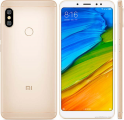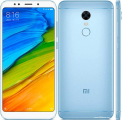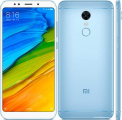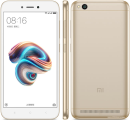Xiaomi Mi Note Prices
Important Note.
- All prices are in Pakistani Rupee (PKR)
- Prices may vary at stores and our effort will be to provide you with the updated prices.
- Find out WhatMobile price has dropped in Pakistan by selecting Notify Price Drop button
- Find out WhatMobile has better specifications by clicking Add To Compare Button find out what Mobile has better reviews by visiting our reviews section
- Find out WhatMobile is cheaper on which retailer by clicking Compare prices from retailers button
Search Terms
- Xiaomi Mi Note
Specifications
| GENERAL | |
| 2G Network | GSM 850 / 900 / 1800 / 1900 - SIM 1 & SIM 2 |
|---|---|
| 3G Network | HSDPA 850 / 1900 / 2100 TD-SCDMA |
| 4G Network | LTE band 3(1800), 7(2600), 38(2600), 39(1900), 40(2300), 41(2500) |
| Sim | Dual SIM (Micro-SIM/Nano-SIM, dual stand-by) |
| Announced | 15/01/2015 |
| Status | Available. Released 2015, January |
| BODY | |
| Dimensions | 155.1 x 77.6 x 7 mm (6.11 x 3.06 x 0.28 in) |
| Weight | 161 g (5.68 oz) |
| DISPLAY | |
| Display Size | 5.7 inches, 89.6 cm2 (~74.4% screen-to-body ratio) |
| Resolution | 1080 x 1920 pixels, 16:9 ratio (~386 ppi density) |
| MultiTouch | Yes |
| Protection | Corning Gorilla Glass 3 |
| SOUND | |
| AlertTypes | Vibration; MP3, WAV ringtones |
| LoudSpeaker | Yes |
| 3.5mm jack | Yes - 24-bit/192kHz audio - Active noise cancellation with dedicated mic |
| MEMORY | |
| CardSlot | No |
| Internal | 16 GB, 3 GB RAM |
| DATA | |
| GPRS | Yes |
| EDGE | Yes |
| Speed | HSPA, LTE Cat4 150/50 Mbps |
| WLAN | Wi-Fi 802.11 a/b/g/n/ac, dual-band, WiFi Direct, hotspot |
| Blue Tooth | 4.1, A2DP, LE |
| USB | microUSB 2.0, USB Host |
| CAMERA | |
| Camera Primary | 13 MP, f/2.0, OIS, autofocus, dual-LED dual-tone flash |
| Camera Features | Geo-tagging, touch focus, face/smile detection, HDR, panorama |
| CameraVideo | 2160p, 1080p@30fps |
| CameraSecondary | 4 MP (f/2.0, 1/3", 2 µm), 1080p |
| FEATURES | |
| Processor Cores | Quad-Core |
| OS | Android 4.4.4 (KitKat), planned upgrade to 6.0 (Marshmallow) |
| CPU | Quad-core 2.5 GHz Krait 400 |
| Sensors | Accelerometer, gyro, proximity, compass, barometer |
| Messaging | SMS(threaded view), MMS, Email, Push Mail, IM |
| Browser | HTML5 |
| Radio | No |
| GPS | Yes, with A-GPS, GLONASS, BDS |
| Colors | Black, White |
| Others | - Fast battery charging (Quick Charge 2.0) - MP4/H.264 player - MP3/WAV/eAAC+/Flac player - Photo/video editor - Document viewer |
| BATTERY | |
| Battery | Non-removable Li-Ion 3000 mAh battery |
| MISC | |
Reviews
Price: £599 inc VAT
Rating: 0

Last week Xiaomi unveiled its Mi Note Pro, a much cheaper rival to the Note 4 that it says is the most powerful phonein the world. We take a look at the specs in our Xiaomi Mi Note Pro vs Samsung Galaxy Note 4 comparison. Also see: Xiaomi Mi Note Pro UK release date, price and specsand our full Samsung Galaxy Note 4 review.
Note that we have not yet tested the Xiaomi Mi Note Pro and are merely comparing only the specs; your eventual purchasing decision should also take into account how the phones cope with everyday life. Also see: Best smartphones 2015and Best Android phones 2015.
Xiaomi Mi Note Pro vs Samsung Galaxy Note 4 comparison: UK price and availability
Samsung's Galaxy Note 4 is already available in the UK on a contract or SIM-free. At the time of writing the Note 4 cost £519 SIM-free at Amazon.
Xiaomi's Mi Note Pro is not yet on sale in the UK, but it's expected at the end of March with a retail value of 3,299 yuan. A straight conversion is £353, making it some £160 cheaper than the Note 4, although it'll probably cost a little more over here. Oppomartis already listing the Mi Note Pro for $599, which equates to £399 (still £120 cheaper than the Note 4).
Xiaomi Mi Note Pro vs Samsung Galaxy Note 4 comparison: Display, design and build
Both the Xiaomi Mi Note Pro and Samsung Galaxy Note 4 are what we might consider phablets(also see Best phablets 2015) with 5.7in screens. Each adorns a Quad HD (2560x1440) resolution, resulting in a pixel density of 515ppi. The choice of panel tech differs, however, with Samsung using a Super AMOLED screen and Xiaomi opting for Sharp/JDI's IPS LCD tech. We reckon this gives Samsung the slight edge, but both are brilliant screens.
The phones are built around sturdy metal frames. Xiaomi fits its Mi Note Pro with a 2.5D glass front and 3D glass rear giving it a premium feel. Samsung matches its front but uses a faux leather rear that may add some grip. The Samsung's back cover is also removable, letting you access the battery compartment and swap in a spare.
The Xiaomi Mi Note Pro is significantly thinner than the Samsung Galaxy Note 4, and a little lighter too. It measures 77.6x6.95x155.1mm and weighs 161g against the Note 4's 153.5x8.5x78.6mm and 176g.
Xiaomi Mi Note Pro vs Samsung Galaxy Note 4 comparison: Processor, memory and storage
Xiaomi takes the lead in the hardware department, and although we've yet to run our benchmarks on the Mi Note Pro we can be pretty sure its Qualcomm Snapdragon 810 chip will beat the Note 4's 805 hands-down. Clocked at 2GHz, this 64-bit octa-core processor is paired with Adreno 430 graphics and 4GB of RAM. By comparison the Note 4 packs a 2.7GHz quad-core 32-bit chip with Adreno 420 graphics and 3GB of RAM.
You might not notice the extra complement of RAM in general use, but Adreno 430 graphics are said to be 30 percent faster than the 420, and the 64-bit support of the Xiaomi's 810 will allow it to support future 64-bit apps.
We have had the opportunity to test the Samsung Galaxy Note 4, and found it one of the fastest phones we've ever reviewed (also see: What's the fastest smartphone 2015). In Geekbench 3 it managed 3272 points, in SunSpider it recorded 1367ms, and in GFXBench we saw 27fps in T-Rex and 11fps in Manhattan. Expect even more from the Xiaomi Mi Note Pro.
In terms of storage the Xiaomi Mi Note Pro has 64GB as standard (the Note 4 has 32GB), but it lacks the Samsung's microSD support, which lets you add up to 128GB.
Xiaomi Mi Note Pro vs Samsung Galaxy Note 4 comparison: Connectivity and extras
The Samsung Galaxy Note 4 stands out for its S Pen (stylus) support and features such as a fingerprint scanner, UV sensor and heart rate monitor, Xiaomi has an ace up its sleeve with dual-SIM support, which is becoming increasingly popular (also see: Best dual-SIM smartphones 2015). The Mi Note Pro accepts a nano- and a Micro-SIM, and both support 4G connectivity.
The Note 4 also supports 4G, but has only a single SIM option. It's also of the Cat 6 (300Mb/s) variety, compared to the Mi Note Pro's Cat 9 (450Mb/s). The Note 4 can, however, pair its 4G connection with Wi-Fi to provide super-fast download speeds.
According to GSMArenayou'll find Bluetooth 4.0 and dual-band ac Wi-Fi in the Mi Note Pro, but other connectivity specs are to be confirmed. Meanwhile, with the Note 4 you will find an IR blaster, Bluetooth 4.1, NFC, the latest 802.11ac Wi-Fi with 2x2 MIMO, plus MHL 3.0.
Xiaomi Mi Note Pro vs Samsung Galaxy Note 4 comparison: Cameras
It's impossible to say which is the better camera without testing them, although on paper the Samsung appears to have the better rear camera, while the Xiaomi beats it for selfies at the front. Also see: Best selfie smartphones 2015 and Best selfie sticks 2015.
Samsung fits a 16Mp camera at the back, while Xiaomi specifies 13Mp. Both feature OIS, but only the Samsung can shoot 4K video (the Mi Note Pro maxes out at 1080p full-HD).
At the front the Note 4 has a 3.7Mp camera with a wide selfie mode, while the Mi Note Pro has a 4Mp camera with large 2-micron pixels.
Xiaomi Mi Note Pro vs Samsung Galaxy Note 4 comparison: Software
Out of the box the Samsung Galaxy Note 4 runs Android 4.4 KitKat with TouchWiz, but it will be updated to the latest version, Android 5.0 Lollipop. The Xiaomi Mi Note Pro runs Xiaomi's MIU 6 software, which is based on Android 4.4.4 KitKat.
Samsung offers more in terms of extra software features, but this isn't necessarily a good thing for all users. We do like the ability to simultaneously view two apps onscreen and the S Note app when used with the improved, however.
Xiaomi Mi Note Pro vs Samsung Galaxy Note 4: Audio
Samsung boasts multi-directional voice recording for its Galaxy Note 4 with three mics, but for playback it's the Xiaomi that takes the lead. It supports 24-bit/192KHz lossless playback of files including APE, FLAC, DSD and WAV. The Note 4 can handle MP3, AAC/AAC?/eAAC?, WMA, AMR-NB/WB, Vorbis and FLAC audio.
Xiaomi Mi Note Pro vs Samsung Galaxy Note 4 comparison: Battery life
Battery life is impossible to guess from the specs alone, but we reckon this one will swing Samsung's way. Not only does it have less powerful hardware and more energy-efficient screen tech, its battery is higher-capacity (3220mAh against the Xiaomi's 3000mAh) and removable. Also see: Best power banks 2015.
Xiaomi Mi Note Pro vs Samsung Galaxy Note 4 comparison: Verdict
With a price some £120 lower than the Galaxy Note 4, dual-SIM capability and the faster hardware of the pair, Xiaomi's Mi Note Pro is a seriously impressive proposition. But Samsung has plenty to fight back with, including what we think will be the better screen, longer battery life and special features such as an S Pen, a fingerprint scanner, heart-rate monitor and UV sensor. We can't wait to get the Xiaomi Mi Note Pro into our lab and take a proper look.
Follow Marie Brewis on Twitter.
Buying Advice
With a price some £120 lower than the Galaxy Note 4, dual-SIM capability and the faster hardware of the pair, Xiaomi's Mi Note Pro is a seriously impressive proposition. But Samsung has plenty to fight back with, including what we think will be the better screen, longer battery life and special features such as an S Pen, a fingerprint scanner, heart-rate monitor and UV sensor. We can't wait to get the Xiaomi Mi Note Pro into our lab and take a proper look.Write Your Own Review
My Recent Reviews
- Be first to post review for this product.
comments powered by Disqus







.jpg)



















